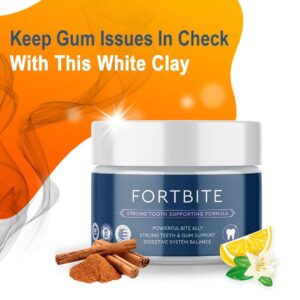Who doesn’t enjoy having a smile that looks beautiful in their social media posts? But suppose you pose for a selfie and the tartar on your teeth is what is photographed. Even though it happens frequently, plaque buildup, or tartar, isn’t appealing, especially since tartar can form a brown or black stain on your teeth.
Describe tartar
Plaque, a white, sticky layer on the surface of teeth, is created when bacteria in the mouth interact with food remnants. If left untreated, this plaque may eventually solidify into tartar, sometimes referred to as dental calculus in medicine. In addition to making your mouth feel harsh, tartar can cause your gums to enlarge and bleed. Tartar can produce a brown or black stain if it appears below the gum line, and if it appears above the gum line, it will be yellowish or browned. Additionally, tartar might progressively get bigger and darker if you don’t check it.
The detrimental effects of tartar on oral health are nothing new. Thus, getting rid of it is essential. But before you decide to trust your abilities and clean your teeth of tartar at home, consider what we have to say. A little bit of difficulty may arise.
The benefits of going to the dentist

Tartar is difficult to remove and is tenacious. In an effort to eliminate the discoloration, you may clean your teeth vigorously, but this could backfire. Making an attempt on your own may also result in gum and enamel damage. By visiting the dentist, you can be confident that your teeth will receive excellent care and cutting-edge dental equipment.
You may rely on dentists to easily remove the tartar because they are trained to handle the gums softly. With the aid of hand scaling instruments or ultrasonic technology, dentists perform the scaling procedure to remove tartar safely. So, if you want a tidy and careful job, don’t be afraid to approach your oral health specialist.
How to avoid developing tartar?
As they say, it’s always better to prevent problems than to try to fix them. Plaque can absolutely be removed at home, but tartar must be professionally removed and cannot be done so. So, here are some recommendations you can use at home to avoid tartar buildup and protect your radiant smile:
Brushing your teeth: Brushing twice a day is the first step in keeping up a regular oral hygiene regimen. Brushing just once when you first wake up is insufficient since there is a greater likelihood that plaque will build up overnight due to bacteria and any minute food particles that may have gotten lodged in your teeth. As part of your daily oral hygiene practice, brush your teeth once in the morning and once before bed each night with a soft-bristled toothbrush or the Oral-B electric toothbrush.
Scrape your tongue: Using a tongue scraper or the back of your toothbrush to clean your tongue can significantly improve oral hygiene. Do not undervalue the importance of this straightforward action. On the surface of the tongue, particularly towards the rear, bacteria in your mouth frequently might build up. Bacteria are present if you see a white, sticky covering on the tongue. Small food particles between the teeth and these oral bacteria can interact, causing tartar and other gum and tooth disorders.
Rinse with mouthwash: Mouthwash is useful for destroying oral bacteria and preventing the development of plaque. So use a mouthwash that has been approved by your dentist after brushing.

Don’t miss this step, even if you might be tempted to! Floss properly and frequently! The importance of flossing twice per day is equal to that of brushing. By flossing, you can make sure that any little food fragments or plaque that may have been hidden between your teeth are taken out. Use simple, waxed floss strips that may slip between teeth with ease and effectively remove plaque.
Visit the dentist frequently to get your teeth thoroughly cleaned. Avoid letting the plaque problem get out of hand. It is advised to have your teeth cleaned once every six months.
While attempting to remove tartar from teeth at home is not advised, tartar may definitely be avoided if the proper steps are taken. Maintain a regular dental care schedule and regular dental visits. It’s also crucial to utilize modern dental goods on a daily basis, such as Oral-B electric toothbrushes, which clean teeth well and remove plaque with ease.
Are you curious to learn more about plaque and tartar? Here is a comprehensive approach to tooth tartar and plaque.
What Is Black Plaque and Why You Should Care?
Imagine going to a crucial business meeting or your first date with your crush; everything is going well until you smile and a speck of black tartar appears on your teeth. On the surface of the teeth, there is a black substance called calculus, also known as black plaque, which won’t go away on its own. Black tartar can be a breeding ground for bacteria, be difficult to remove with brushing or flossing and cause a variety of gum and tooth disorders. What, however, is black tartar? Let’s investigate.
What causes black tartar to form?
Nobody desires a discolored grin. However, having tartar on your teeth can actually give you that. Plaque, a white, soft coating on the surface of the teeth caused by poor brushing and flossing, can develop when bacteria along the gumline accumulate. It is easily eliminated with good dental hygiene practices. Plaque, however, can harden and turn black if it is ignored for a long time, making it impossible to remove with routine brushing and flossing.
What causes teeth to develop black tartar?
The development of black tartar on the surface of the teeth is typically attributed to inadequate oral hygiene. If tartar develops below the gum line or turns black, insufficient brushing and flossing are likely the cause. However, those aren’t the only ones. Smoking, consuming foods and drinks that “stain,” such as coffee, wine, or tea, harming or destroying enamel, and eating a diet high in sugar and starch are some other factors that can cause the development of black tartar on the teeth.
What symptoms indicate black tartar?
You won’t need to go far to see some obvious tartar symptoms. Here are some signs that suggest the development of black tartar on teeth:
- Bad breath, or halitosis
- missing tooth
- dark discoloration on the teeth’s surface
- a hard buildup on the teeth
- Gums that are swollen, painful, or bleeding
How can black tartar be removed?
It is impossible to remove black tartar on your own. Visit your dentist for the best results if you wish to remove black tartar. To assist you in removing it, he or she will start a teeth-cleaning procedure. Scaling or root planning is a step in the cleaning process that involves removing or scraping the black plaque from teeth both above and below the gum line.
Probably on your mind is, “Is there anything I can do to stop it?” You can, indeed. We’re here to assist you since prevention is always preferable to treatment. The majority of the time, poor brushing or flossing results in tartar accumulation. To prevent this, consider the following advice:
Brushing your teeth twice a day is crucial if you want to avoid the accumulation of black plaque on your teeth. Use a soft-bristled toothbrush, such as the Oral-B electric toothbrush, and brush twice daily. It is advised to brush after every meal if you are prone to tooth decay or excessive plaque buildup. To prevent decay, use a fluoride-containing toothpaste that controls tartar.

Floss effectively: After brushing, flossing twice daily will assist get rid of all the hidden plaque and minute food particles that could later lead to decay and tartar. Use floss strips that are simple and waxed so they can move freely between teeth without causing harm.
Avoid tobacco products at all costs if you want to avoid developing black tartar. Smoking, using pipes, and other similar products can “stain” teeth and cause tartar development on the surface or around the gum line. The same is true while consuming drinks like tea, coffee, or wine.
Visit the dentist: Make routine dental visits, ideally once every six months. Tartar, along with other tooth and gum disorders, can be avoided with routine teeth cleaning and advice from a dental care professional.
Therefore, you can prevent black tartar on the teeth by doing this. It’s crucial to follow good dental hygiene practices and see the dentist on occasion. It is also essential to use top-quality dental goods, like Oral-B electric toothbrushes, to remove plaque properly and stop it from setting up as black tartar.
